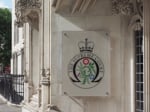Despite uncertainty surrounding issues such as the future shape of new car retailing, the all-new registration plate system being introduced in September and wider issues like the election, dealers remain bullish about the prospects for the used car market.
Cap's used car confidence index shows that in the first four months of the year dealers have maintained the belief that their used car retailing fortunes will improve.
Confidence levels declined in March before picking up in April, possibly a reflection of concerns that the Y-plate would spark an influx of used cars in the form of part exchanges, but those believing that things would improve still outnumbered those expecting a decline.
The index is based on a sample of dealers across the UK and the 'confidence factor' is calculated by assigning values to their views of whether sales will improve, decline or remain the same.
The current outlook is being sustained by strong sales, which depend on consumer confidence in the market. Dealers have consistently reported that in terms of year-to-date retail sales, 2001 is beating last year's used car performance.
For the first four months, the figures show a 2.7% improvement on the same period last year. The reason for this is a return to stability in the market after the new car pricing row of last year destroyed consumer confidence, effectively leading to a showroom boycott.
This is reinforced by the Cap index, which tracks new and used car values. Used values (based on three-year-old cars with 30,000 miles) have started to stabilise. This month they have risen due to strong retail activity and dealers competing with each other for retail stock.
The timing of this upturn demonstrates the centrality of consumer confidence in the health of those values. It is often assumed that used car prices are inextricably tied to those of new cars and that slashing the prices of one leads to a fall in the other.
In fact, the opposite has occurred. Residual values recovered at exactly the same point that list prices were cut. Last summer, values were down nearly 10% while list prices were almost stable. Now used prices are rising even though new prices have fallen by 6%.
It was the expectation of new car price cuts which led customers to play a waiting game and postpone their car buying activity. This caused falling values before the cuts happened. This clearly shows that the new car/used car pricing relationship is not as simple as some would believe .














Login to comment
Comments
No comments have been made yet.